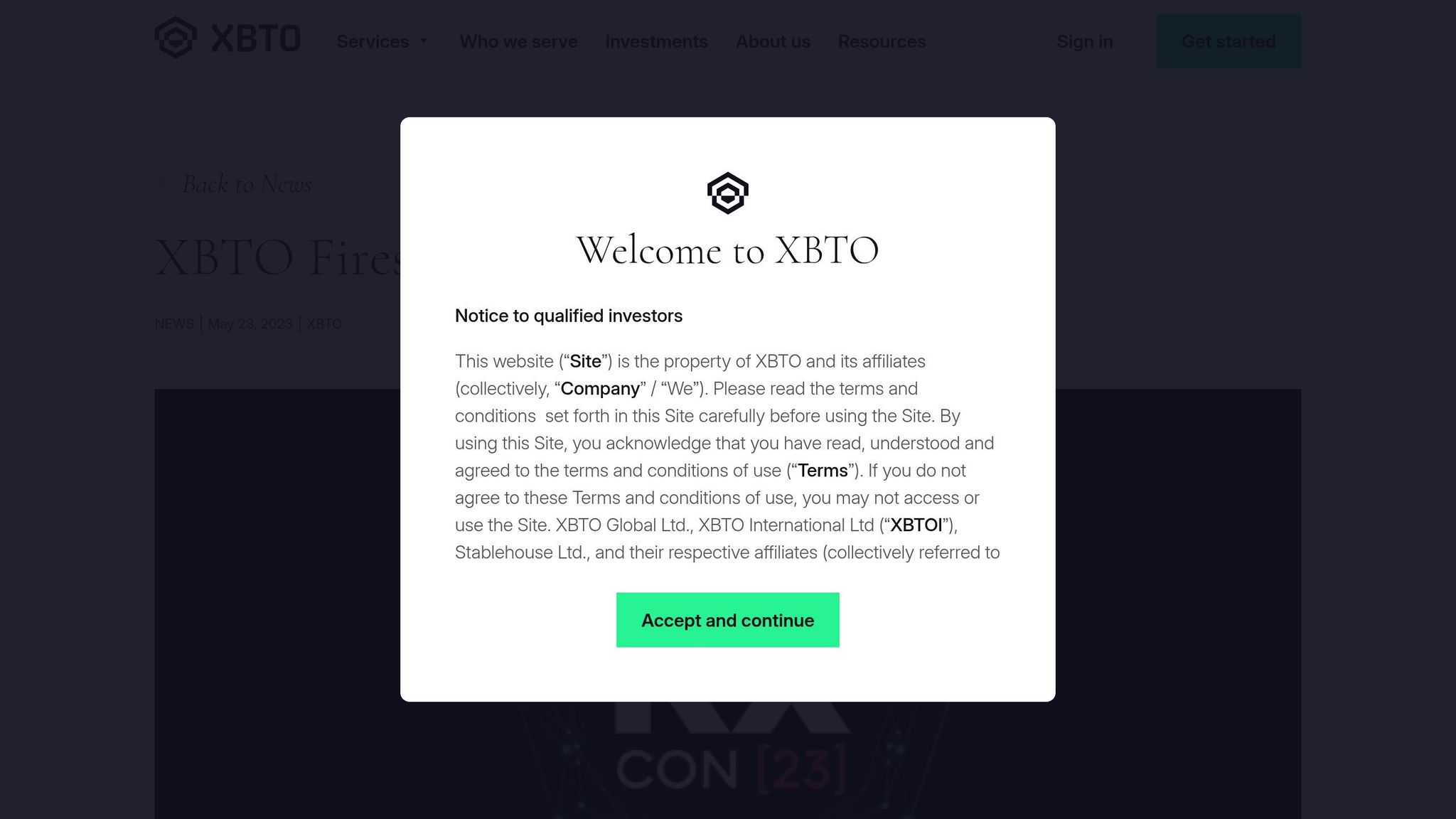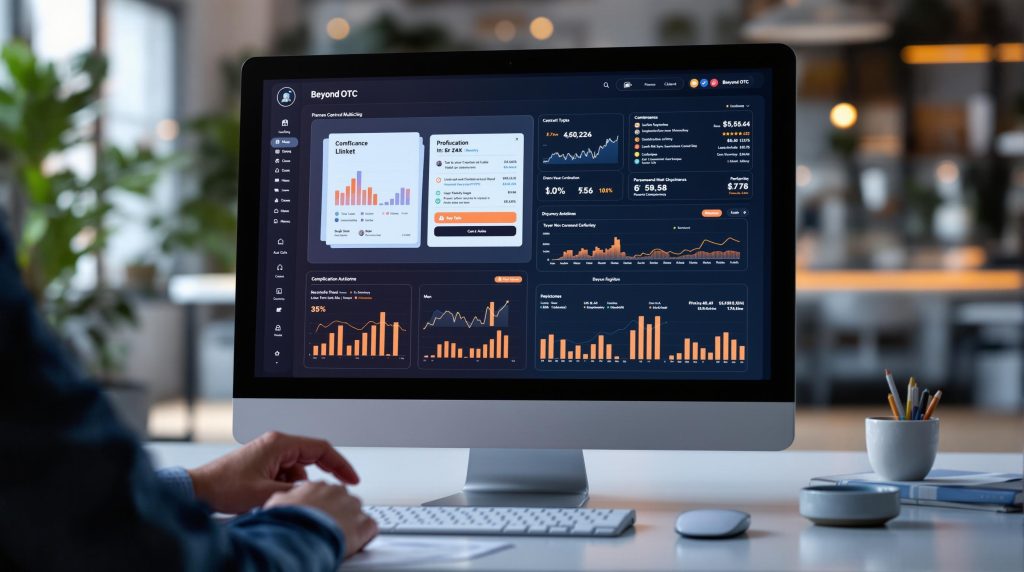In cryptocurrency OTC (over-the-counter) trading, liquidity is the ability to execute large trades without significantly affecting market prices. Here’s how to optimize it:
- Use Multiple Liquidity Sources: Combine OTC desks, centralized exchanges (CEXs), and decentralized exchanges (DEXs) to access deeper liquidity pools.
- Track Key Metrics: Monitor spreads, order book depth, and settlement times to identify the best trading venues.
- Leverage Trading Tools: Use custom algorithms to route orders efficiently, manage risks, and adapt to market changes.
- Mitigate Risks: Partner with verified trading desks, follow KYC/AML compliance, and prepare for market volatility with real-time monitoring.
- Advanced Tools: Use market analysis tools like order book visualizations, price impact calculators, and volume trackers for better insights.
For large trades, focus on managing risks, using professional support, and employing tailored strategies to ensure efficient execution without market disruptions.
Methods to Improve Liquidity
Working with Multiple Sources
To handle large OTC trades effectively, it’s crucial to tap into a variety of liquidity sources. This means collaborating with trusted providers across different platforms – such as OTC desks, centralized exchanges (CEXs), and decentralized exchanges (DEXs). For example, BeyondOTC connects institutional clients with a broad network of OTC desks, CEXs, and DEXs to ensure access to a wide range of liquidity options. By using diverse channels, traders can better evaluate liquidity and navigate market fluctuations.
Measuring Liquidity Quality
Managing liquidity effectively starts with closely tracking trading metrics across platforms. Key factors to monitor include:
| Metric | Description | Impact |
|---|---|---|
| Spread Analysis | Difference between bid/ask prices | Reflects trading costs |
| Order Book Depth | Volume available at each price level | Indicates potential price impact |
| Settlement Time | Time taken to complete transactions | Influences trading efficiency |
These metrics are essential for choosing the right trading venue in real time. Analyzing the market as it moves allows traders to pinpoint the most efficient platforms for their specific transaction sizes, leading to better trade execution and outcomes.
Using Trading Tools
Advanced trading tools take liquidity management to the next level. Custom algorithms, for instance, can route orders to the best liquidity sources as market conditions shift, helping to reduce risks. These tools are designed to:
- Monitor live market conditions
- Evaluate the quality of executed orders
- Manage risk across various platforms
- Fine-tune trade timing and order sizes
Many professional trading platforms also provide features for studying historical trading data and market trends. These insights allow traders to predict liquidity patterns and adjust their strategies to stay ahead.
KXCON23 | Blockchains in Trading | kdb at B2C2

sbb-itb-7e716c2
Managing Liquidity Risks
Managing risks effectively is just as important as sourcing liquidity when executing large OTC trades.
Trading Partner Safety
Evaluating potential trading partners involves a detailed due diligence process. Here’s what to focus on:
| Verification Aspect | Key Considerations | How to Mitigate Risks |
|---|---|---|
| Track Record | Trading history and volume | Review past transaction records |
| Financial Stability | Asset reserves and solvency | Examine financial statements |
| Security Measures | Custody solutions and protocols | Assess security infrastructure |
| Market Reputation | Industry standing and references | Seek feedback from trusted networks |
For large trades, working with established OTC desks or institutional investors is critical. These entities should have strong security protocols and a proven track record. For example, BeyondOTC ensures safer trading by conducting thorough background checks and ongoing monitoring of its verified partners.
Reliable partnerships should always go hand-in-hand with strict compliance measures.
Following Trading Rules
Compliance with KYC and AML regulations is non-negotiable. This includes verifying identities through government-issued IDs, proof of address, and sources of funds. Ongoing transaction monitoring, staff training, and maintaining detailed audit trails are also essential.
Professional OTC desks often use advanced compliance systems to flag suspicious activities automatically and keep comprehensive records. These measures help ensure trades remain secure and compliant, even in volatile market conditions.
Handling Market Changes
Market volatility is a constant challenge. Here’s how to manage it effectively:
- Real-Time Monitoring: Keep an eye on market indicators across multiple exchanges, monitor order book depth to anticipate slippage, and analyze trading volume trends.
- Risk Management Tools: Use custom trading algorithms for efficient execution, price protection mechanisms, and automated circuit breakers to handle extreme volatility.
In volatile markets, deep liquidity pools allow large orders to be processed without causing drastic price movements. Professional OTC solutions provide access to these reserves, ensuring stable pricing even during market turbulence.
To minimize risks, consider setting clear price limits, splitting large orders into smaller chunks, or using TWAP strategies for better execution.
Liquidity Management Tools
Advanced tools for liquidity management work seamlessly with the risk strategies mentioned earlier, offering traders better control and insights.
Market Analysis Tools
These tools provide critical insights into market dynamics:
| Tool Category | Primary Functions | Key Advantages |
|---|---|---|
| Order Book Analysis | Visualizes depth, monitors spreads | Pinpoints liquidity gaps and ideal entry points |
| Volume Tracking | Analyzes real-time and historical volume | Anticipates potential liquidity constraints |
| Price Impact Calculator | Estimates slippage, projects costs | Aids in planning trade sizes and execution |
| Market Depth Charts | Visualizes aggregated liquidity | Displays liquidity across various price levels |
These tools integrate with trading systems, offering real-time data updates and customizable alerts. By using this information, traders can fine-tune strategies to better manage liquidity.
Professional Trading Support
BeyondOTC operates in over 50 countries, connecting traders to a variety of liquidity sources and opportunities. Their round-the-clock support includes:
- Custom trading algorithm deployment
- Real-time market tracking
- Oversight for risk management
- Assistance with cross-border transactions
With a proven history of facilitating over $2 billion in client fundraising, BeyondOTC demonstrates expertise in handling complex, large-scale transactions.
Large Trade Solutions
Handling large cryptocurrency transactions requires specialized approaches to maintain liquidity and limit market disruption. These solutions include:
- Block trade execution for sizable orders
- Aggregation of liquidity from multiple venues
- Custom algorithms designed for high-volume trades
The institutional-grade infrastructure ensures secure, efficient execution while stabilizing the market during significant transactions. These solutions are designed to meet the demands of high-volume trading without compromising market integrity.
Summary
This guide outlines key methods and controls for improving liquidity in OTC crypto trading, focusing on practical steps to optimize performance and manage risks.
Key Steps Review
To improve liquidity, focus on combining multiple sources, keeping an eye on quality metrics, managing risks effectively, and using advanced trading tools.
| Strategy Component | Implementation Focus | Expected Outcome |
|---|---|---|
| Multi-Source Integration | Connect with various liquidity pools | Greater depth and better pricing |
| Quality Metrics | Track spread and execution speed | Better trade outcomes |
| Risk Management | Verify partners and monitor markets | Lower counterparty risk |
| Technical Infrastructure | Use advanced trading tools | Faster and more efficient execution |
This structured approach also opens the door to working with professional agencies to refine liquidity strategies.
Working with Agencies
BeyondOTC provides a strong infrastructure and 24/7 support, making it easier to handle large transactions smoothly, even in volatile market conditions.
Next Steps
To put these strategies into action, institutional traders should:
- Evaluate liquidity sources
- Use market analysis tools
- Build partnerships with trusted OTC providers
- Create custom trading algorithms
A strong infrastructure combined with the ability to adjust to market changes is essential for handling large trades efficiently while keeping market impact to a minimum.




